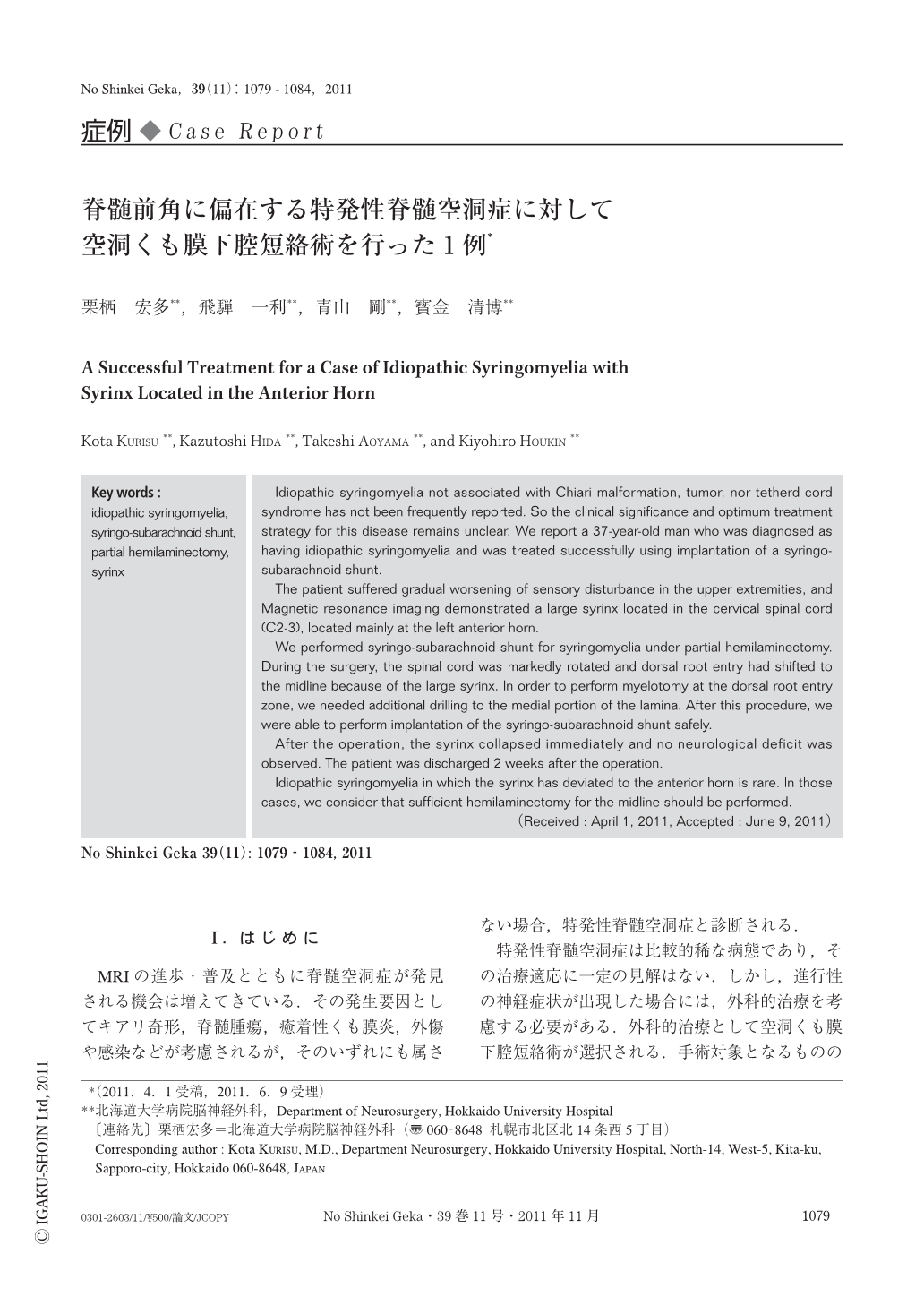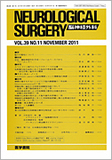Japanese
English
- 有料閲覧
- Abstract 文献概要
- 1ページ目 Look Inside
- 参考文献 Reference
Ⅰ.はじめに
MRIの進歩・普及とともに脊髄空洞症が発見される機会は増えてきている.その発生要因としてキアリ奇形,脊髄腫瘍,癒着性くも膜炎,外傷や感染などが考慮されるが,そのいずれにも属さない場合,特発性脊髄空洞症と診断される.
特発性脊髄空洞症は比較的稀な病態であり,その治療適応に一定の見解はない.しかし,進行性の神経症状が出現した場合には,外科的治療を考慮する必要がある.外科的治療として空洞くも膜下腔短絡術が選択される.手術対象となるものの多くは空洞が大きく拡大して偏在を認めないものか,空洞が脊髄後角に偏在するものが多く,手術に際しては脊髄の最も菲薄化した後根侵入部を切開し,空洞内にチューブを留置するのが一般的である.しかし,脊髄前角に空洞が偏在する特発性脊髄空洞症に対して,空洞くも膜下腔短絡術を行った報告はない.
今回,われわれは脊髄前角に偏在して発生した特発性脊髄空洞症に対して,空洞くも膜下腔短絡術を行い,良好な転帰を得た.その手術の際のポイントも踏まえて,若干の文献的考察とともに報告する.
Idiopathic syringomyelia not associated with Chiari malformation,tumor,nor tetherd cord syndrome has not been frequently reported. So the clinical significance and optimum treatment strategy for this disease remains unclear. We report a 37-year-old man who was diagnosed as having idiopathic syringomyelia and was treated successfully using implantation of a syringo-subarachnoid shunt.
The patient suffered gradual worsening of sensory disturbance in the upper extremities, and Magnetic resonance imaging demonstrated a large syrinx located in the cervical spinal cord (C2-3), located mainly at the left anterior horn.
We performed syringo-subarachnoid shunt for syringomyelia under partial hemilaminectomy. During the surgery, the spinal cord was markedly rotated and dorsal root entry had shifted to the midline because of the large syrinx. In order to perform myelotomy at the dorsal root entry zone, we needed additional drilling to the medial portion of the lamina. After this procedure, we were able to perform implantation of the syringo-subarachnoid shunt safely.
After the operation, the syrinx collapsed immediately and no neurological deficit was observed. The patient was discharged 2 weeks after the operation.
Idiopathic syringomyelia in which the syrinx has deviated to the anterior horn is rare. In those cases,we consider that sufficient hemilaminectomy for the midline should be performed.

Copyright © 2011, Igaku-Shoin Ltd. All rights reserved.


